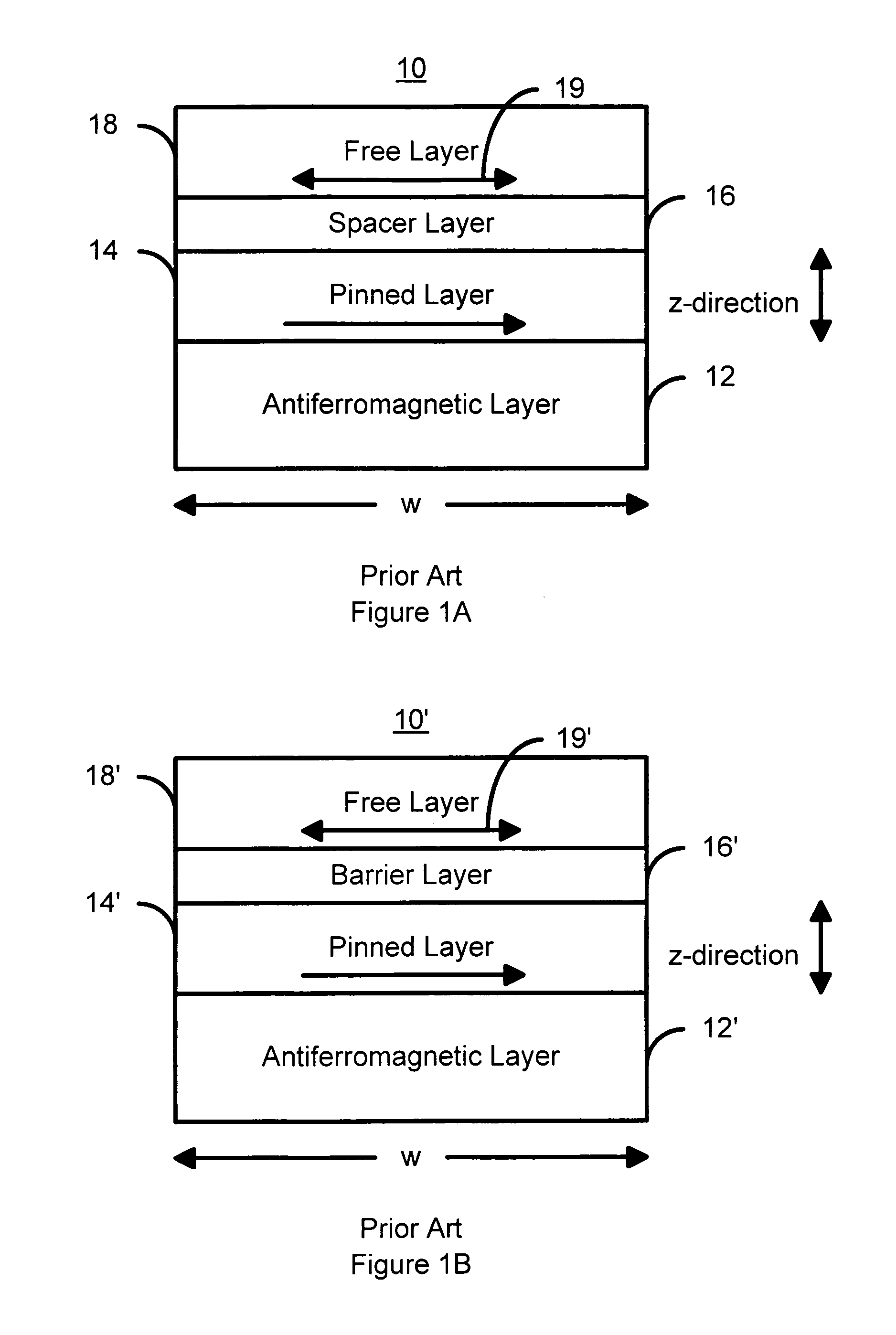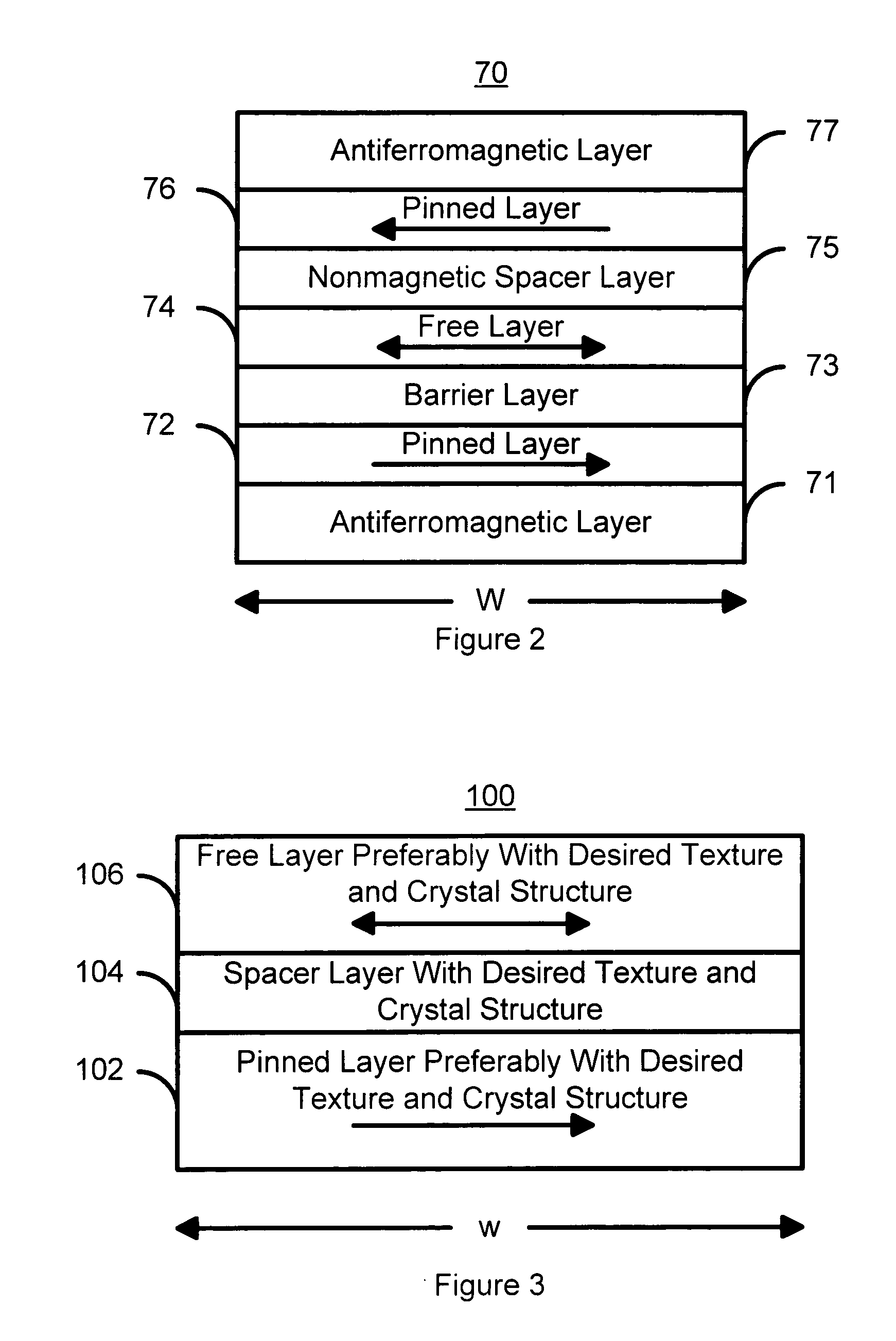Method and system for providing a highly textured magnetoresistance element and magnetic memory
a magnetoresistance element and magnetic memory technology, applied in the field of magnetic memory systems, can solve the problems of increasing power consumption, adversely affecting the utility and reliability of such conventional magnetic elements, and affecting the utility and reliability of such conventional magnetic elements, and achieve the effect of reducing the write curren
- Summary
- Abstract
- Description
- Claims
- Application Information
AI Technical Summary
Benefits of technology
Problems solved by technology
Method used
Image
Examples
first embodiment
[0032]FIG. 3 is a high-level diagram of a magnetic element 100 in accordance with the present invention and which can be written using spin transfer. The magnetic element 100 includes a pinned layer 102, a spacer layer 104, and a free layer 106. In a preferred embodiment, the magnetic element 100 also includes a pinning layer (not shown) that is preferably an AFM layer. Although depicted as a simple layer, the pinned layer 102 may be a synthetic pinned layer including two ferromagnetic layers separated by a nonmagnetic spacer layer. The thickness of the nonmagnetic spacer layer is configured so that the magnetizations of the ferromagnetic layers are antiferromagnetically coupled. In a preferred embodiment, the pinned layer 102, or the ferromagnetic layer adjacent to the spacer layer 104, has a body centered cubic (bcc) structure. In a preferred embodiment, the pinned layer 102, or the ferromagnetic layer adjacent to the spacer layer 104, has a texture. In a preferred embodiment, thi...
second embodiment
[0049]FIG. 7 is a diagram of a magnetic element 200 in accordance with the present invention and which can be written using spin transfer. The magnetic element 200 is a dual spin filter. The magnetic element 200 includes a first pinned layer 216, an insulating spacer layer 218, a free layer 220, a spacer layer 228, and a second pinned layer 230. The spacer layer 228 is nonmagnetic and either conductive or another insulating tunneling barrier. The magnetic element 200 also preferably includes a first pinning layer 214 and a second pinning layer 232. Also depicted are a bottom contact 212 and a top contact 234. Thus in case of a conducting spacer layer 228, the magnetic element 200 could be considered to include a spin tunneling junction 202 and a spin valve 204 that share a free layer 220. However in case of an insulating tunneling barrier for the spacer layer 228, the magnetic element 200 could be considered to include two spin tunneling junction, 202 and 204, that share a free laye...
PUM
 Login to View More
Login to View More Abstract
Description
Claims
Application Information
 Login to View More
Login to View More - R&D
- Intellectual Property
- Life Sciences
- Materials
- Tech Scout
- Unparalleled Data Quality
- Higher Quality Content
- 60% Fewer Hallucinations
Browse by: Latest US Patents, China's latest patents, Technical Efficacy Thesaurus, Application Domain, Technology Topic, Popular Technical Reports.
© 2025 PatSnap. All rights reserved.Legal|Privacy policy|Modern Slavery Act Transparency Statement|Sitemap|About US| Contact US: help@patsnap.com



